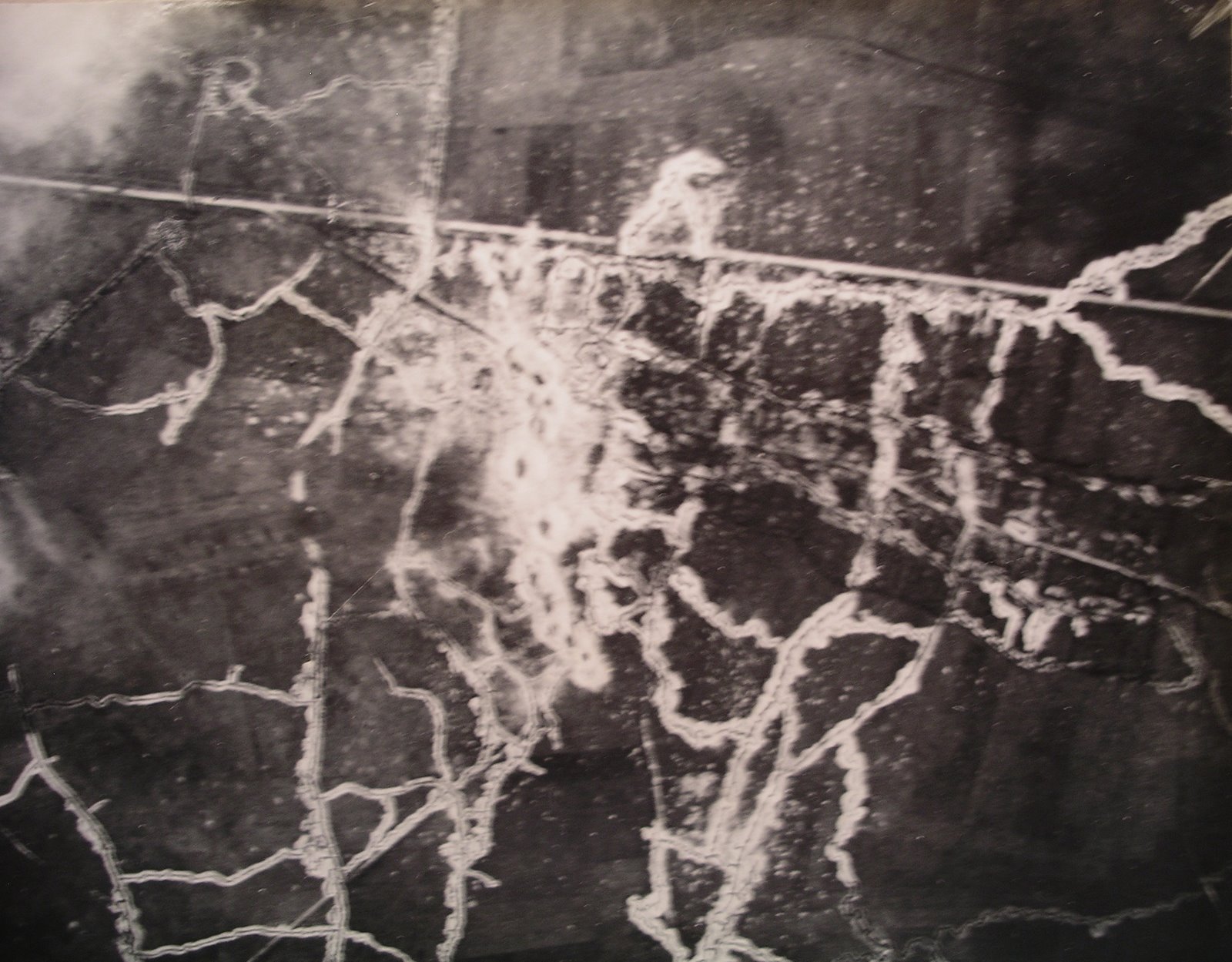Here are some poems I wrote while writing my book Willow / Wilg / Weide / Saule (Ypres Willows):
Willows PoemsShock of Recognition, Pilckem RidgeBlood-dark, stark against the sky
are war’s images we carry from photograph’s still grain,
the film’s foolery of the eye, a painting’s pigment,
the landscape sweep of panoramas . . .
Their shapes jolt vision, shake sense, dislocate;
these fields were, are.
Tree-fans of high explosive smoke erupt from fields
where willow rods now claim the sky.
Spring’s lanyard jerks at the breech,
a green fuze triggers spurting sap’s gaine;
willow fingers start their splaying trajectory.
We are in the killing zone, once quick with death’s dawn timetable,
its tide marks of cartographic plots:
the field guns’ creeping and standing barrages,
the machine gun barrage,
the bombardment by trench mortars,
by medium and heavy artillery.
Here men flounder over fractured earth,
through nets of wire,
through air roaringly reticulated;
flayed by a burning sleet of lead,
scouring shrapnel balls’ fiery hail,
a steel scourge of splinters.
Napoleon’s Fifth Element, PasschendaeleEarth, rooted;
Air, breathing and dancing;
Fire, all around;
Water, the life blood;
Mud.
The Line of March, MessinesStatic sentinels,
or stalking figures, up the track, along the hedge;
then in open order,
shaking out into line
or artillery formation.
Unharvested,
their rods
explode into the sky.
Ancient Pollards, Ploegsteert(‘Old willow boles, rarely sound and falling about untidily,
continue to shoot vigorously’)
Spiky, hoary polls -
shock-headed,
gnarl-faced,
whorled,
limbless;
the old sweats, who once fired
fifteen rounds rapid.
Rotting, raddled corpses,
And survivors, old wounds healed
around shell splinters, steel rods, concrete,
screw pickets, wire barbs.
White Willows, Cross Roads FarmSome white willows are weeping,
their lashes stroking the moat’s breast,
dropping tears.
Bat and Ball; drawing a blankThe backs of the leaves flicker white in the wind
as a ghost, or an angel, passes;
the felled tree’s flesh glimmers with the pallor of a shroud.
Sawn straight from it, the undressed white willow slab, square cut,
like the round which will not kill
is called a blank (not ball).
Reading the Runes, St YvonHow to read the brown hare,
lored with wicca and moon,
breaking in February’s sunshine over the plough,
along no man’s land, from the trees around the flooded mine crater,
from the wired brushwood by the concrete pillbox sherds?
Trees as text
or as signs, symbols;
conventional signs on the map –
the dots penning the flowing beke,
shoring the still dyke or pool?
Read their linearity, their punctuation,
their studding, their scatter in the landscape.
What information do they yield, these willow patterns?
Some deep, ancient pattern of cultivation, of mulch and tilth,
of gabion, wattle and revetment against the rushing water,
the drilling rain, crumbling bank.
That here Flemish farmers fought the rheumy clay
to work their root crops and pastures,
seed their land,
plant their rods, harvest the osier crop
along the ditch, around the teeming pool and moat.
They line the cultivation, mark the gutter,
form field boundaries, divide lush pasture from clay plough.
Or that here was a battle
leaving a hecatomb of corpses?
The Quick and the Dead(with acknowledgements to Robert Graves)
A tree of enchantment,
the moon’s willow is the fifth tree,
one of the seven wise pillars, with their planets, days and letters,
one of the seven noble, sacred, trees of the grove.
Its branches waving at the fifth month
start May Day’s orgiastic revels, spring magic dew,
urge the season of the renewed sun.
Helicë, the willow sacred to poets,
names Helicon, home of the Nine Muses,
wanton priestesses of the Moon-goddess.
Mount Helicon’s willow fairy, Heliconian the Muse (the White Goddess),
waves her willow-wand,
starts the wind whispering inspiration in the willows,
puts poets’ minds under a strange and potent influence.
Mystically eloquent, Orpheus received his gift
by touching willows in Persephone’s grove;
outside the Dictean Cave the Orphic willow grew.
Water-loving willow, goddess of wells and springs;
witches went to sea in willow basket-sieves, sailed in riddles,
the liknos, used for winnowing corn, telling the future.
Poseidon, to whom a Helicean Grove was sacred,
led the Muses, guarded the Delphic Oracle, before Apollo.
Belili, Sumerian White Goddess, was a willow-goddess of wells and springs.
Beli, her divinatory son, a Sea-god, tutelary deity of Britain - his ‘honey-isle’.
A god must commands its waters –
the grey Narrow Seas, green Western Approaches, blue High Seas –
before he can rule an island.
Weep, willow, for your lost lover;
wear green willows in your hat as a sign;
and as a charm against the jealousy
of the Moon-goddess.
White Moon-wood, dove, barn owl;
Willow’s landscape is the terrain of death, of the White Goddess,
whose prime orgiastic bird – the wryneck, snake-bird, cuckoo’s mate,
spring migrant hissing like a snake,
nests in willows.
Europë on coins from Cretan Gortyna,
sits in a willow tree, osier basket in hand, made love to by an eagle;
is Eur-ope, of the broad face, the Full Moon,
and Eu-rope, of the flourishing withies, Helice, sister of Amalthea.
The ancient word for willow
yields witch, wicked, wicca, wicker;
at Fricourt, by no strange transposition,
Wicket Corner became Wicked Corner.
Druids offer human sacrifice
in wicker baskets
at the full moon.
Rods sprout from willows’ polls, make baskets ensnaring the moon.
Flints knapped to willow-leaves,
inscribed with crescent moons,
are funery.
Willow is sacred to Hecate, Circe, Hera and Persephone,
the Triple Moon-goddess’s witch-worshipped death faces;
so you haven’t got a chance, boys, in the willow landscape.
Willow serviceTrussed with rust-barbed wire,
they stand
as fence posts,
supports for notice boards,
field boundaries;
revet the stream banks,
yield rods, poles, firewood,
nests for birds,
lashed cross-branches skied crows’ nests,
cross-trees for storks, kites;
hiding places for children in their crowns,
for owls in their hollow skulls,
a little shelter against rain’s lashing,
shade for picnics and lovers.



